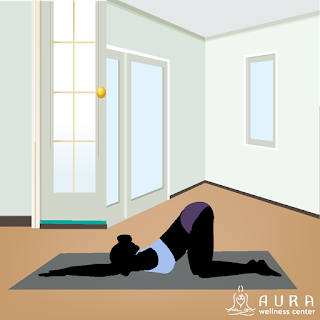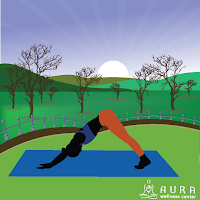Most people know that Yoga can lead to better physical health,
but many are unaware of just how thorough the practice can be. When it comes to
spinal disc decompression, Yoga can provide relief in several ways, making it a
holistic treatment appropriate for people of all ages. Here are some of the
ways in which Yoga helps lead to better spine health.
Stretching
One of the leading contributors to problems with the back and
neck is immobility, and, as more and more of us work at desks during the day,
these problems are becoming worse and worse. While many exercises can lead to
improvements, few exercises do more for moving the spine than Yoga training,
which is based around movement. There are a number of poses that can help with
spinal disc decompression, but using a variety of poses is likely to lead to
the best results in the long term. Still, if a particular pose seems to stretch
your spine especially well, feel free to rely on it more than other poses.
Muscle Relaxation
Too often, people think of the spine by itself and fail to
consider other factors of our bodies that affect it. Some of the most important
contributors to spinal problems are the muscles that surround and support it.
While strengthening the muscles that support the spine might not be enough to
find immediate relief, the process can help. Furthermore, strengthening these
muscles can help prevent future injuries. Yoga is a gentle practice, and
sustained effort can lead to stronger muscles that can also protect against
other types of injuries.
Posture
Maintaining proper posture is essential for preventing spinal
injuries and other problems, but it can be difficult to maintain proper posture
if you lack the proper flexibility and body awareness. Yoga training can help
by ensuring that your body is prepared to support itself properly. While you'll
still need to take steps to make sure you're maintaining your posture
correctly, Yoga can make it easier to maintain your posture for extended
periods of time. In addition, Yoga helps you develop the concentration and
mindset needed to properly align your body. Posture is especially important for
people who sit for extended periods of time.
Relaxation
While the exact connection between spinal health and mental
health isn't completely clear, there's no doubt that they are connected, and
the ties between regular Yoga practice and improved mental health are clear.
Stress and anxiety are clearly connected to a host of physical health problems,
and some researchers believe increasing rates of back problems are largely due
to increases in stress and anxiety. When you maintain your Yoga training, you
can help prevent anxiety by relieving it through physical exercise. In
addition, the improved concentration and self-awareness gained through practice
help keep anxiety controllable.
Faster Recovery
Another advantage of Yoga training is how it can help you
recover from back and neck injuries and other problems. In some cases, the best
way to treat a tweaked back or neck is through gentle stretching, which Yoga
excels at. While recovery still takes time, your training can help you get
back on your feet and back to being productive quickly.
Many
people understand that Yoga comes with a host of health benefits, but many
people don't fully understand how thorough these health benefits truly are.
Stretching your neck and back through Yoga training is helpful, but Yoga's
benefits go far beyond this. If you have spinal disc compression problems, make
sure to add Yoga to your daily routine.
© Copyright – Aura Wellness Center – Publications Division
Click here too see our online Yoga Nidra teacher training course.
Are you an experienced teacher looking for YACEP credits or continuing education?
Subscribe to Our Newsletter for Special Discounts and New Products
Related Resources
52 Essential Principles of Yoga Philosophy to Deepen your Practice
by Rina Jakubowicz.
A Relaxing Way to De-stress, Re-energize, and Find Balance
by: Gail Boorstein Grossman.
YOGA: THE PATH TO HOLISTIC HEALTH
by B.K.S. Iyengar
TEACHING YOGA: Essential Foundations and Techniques
By Mark Stephens
See
our testimonials to find out what our graduates have to say about our selection
of online yoga teacher certification courses. Please feel free to share our posts
with your friends, colleagues, and favorite social media networks.


